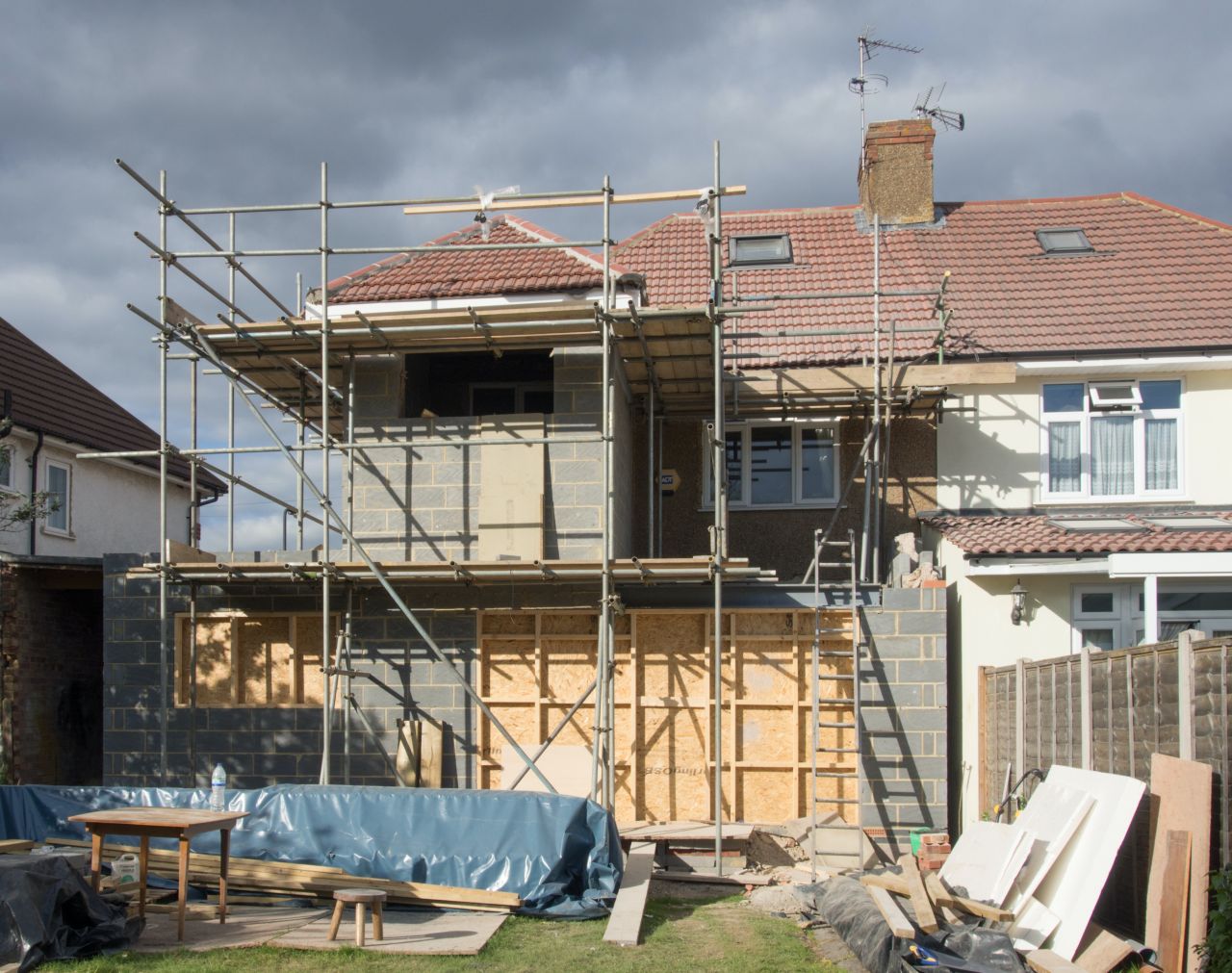The truth is that you can plan a simple addition to your home without the help of an architect. However, you should carefully consider the benefits of consulting with a trained professional construction designer.
This is because the majority of the population lacks the expertise required to incorporate all of the fundamental and more complex features of such a building's design it in to an addition. Keep in mind that architects aren't simply needed for brand new construction; their services may also greatly improve the value of older homes that have been updated or expanded. We will do our best to describe why it is important to hire an architect to plan your home addition.
Developing a vision for your way of life that may be included in the layout of your addition is only one part of architectural design. What this implies is that you will be able to visualise the finished product of your home addition thanks to the drawings which are created. In the design phase, changes might be made if necessary. This is the central focus of the connection between a client and a designer. The risk of having an expansion that you dislike in both appearance and feel increases if you skip the planning stage and have a building contractor get to work without your input.
A property in any town in Ireland, no matter how small, will have its own unique personality as a result of the people who've lived there throughout the years. The way a garden is maintained or the exterior walls are painted can often give clues as to the owners' personalities. An addition is a great opportunity to make your house truly your own. The problem is that many residents desire something more specific than just more space in their homes.
The architectural design process is what brings the client's vision to reality. It's difficult to communicate a vision for a building's layout or interior design unless you've received formal architectural instruction. Many Irish architects have a particular expertise in home construction, so they understand what clients want in an addition even if they don't know what they want.
How Good Architecture Provides Excellent Value

Throughout antiquity, buildings have served as symbols of culture, representing the norms, achievements, and final decline of various civilizations. Everything from the city's most grandiose monuments to its most humble homes and shops tells us something about the people who lived there before us. This begs the question, how exactly does architecture impact society, and is answered by a combination of historical research on the built environment and cutting-edge scientific studies in psychology and environmental science.
Although its primary function is to shape the constructed environment where individuals find themselves, architecture encompasses much more than simply the structures that people inhabit. In addition, it plays an important role in our tradition. It represents not only our internal state but also our external perspective.
Although the need for shelter is universal, the design of structures has evolved over time to reflect factors such as regional climate, available resources, and cultural norms. Even though styles have changed as the world has become more interconnected, it is still important to recognise and respect cultural differences in the building design.
The Top 10 Habits of Successful Architects
Do you want to advance in your design career? HDR's Senior Project Architect John Gresko discusses commonalities among the world's best building designers.
- Sketch. Put pen to paper. It's getting harder to find room to sketch as our workstations get smaller and more crowded with computer screens, but do it nonetheless. You absolutely must be able to communicate effectively in this way. gotten out of the habit of sketching recently, but this is something We hope to rectify soon. Drawing a quick sketch is the quickest approach to communicate a concept. My coworkers have started sketching at client meetings before, which is too much gushing over the client. The clients, project managers, subcontractors, and even our own parents all count on us to be skilled and accomplished draftspeople. If that's what people attribute to us, then let's perfect it and ramp it up.
- Connection with others. The least you can do is give back. A strong proponent for the field. Who else will do it if you don't? The AIA is a great organisation, and you should join. Join them in their effort to rebrand. Study up on the A+L Club. You should sign up with CSI. Since nobody else will look out for our best interests while we navigate the changes in this field, we must do so ourselves. Do something to help the architects of the future. Participate in peer reviews. Take part in the company's recruitment fairs. A short while ago, We returned to my alma institution, the University at Illinois. In spite of my near-cynicism about my work, They always leave a meeting with students feeling refreshed and ready to take on the world. Their energy and skill level were contagious. The peace and quiet lasted for almost three days before things started to unravel at work.
- Address the Critics Cast aside your pride. All fields involving creativity are open to critique. Don't worry about anything but the project. To avoid becoming personally insulted, it is preferable to emotionally detach from an idea. Learn to constructively criticise so that your feedback improves the final product. That which is suggested should be useful or beneficial. Include explanations and recommendations. No one appreciates criticism that swoops in, lays an explosive on the ground, and then flies away. In other words, honey!
- Read. You may improve in both areas by keeping up with both technical and design publications. It's generally accepted that architects are not avid magazine readers. Do yourself a favour and examine the technical journals; we do. We think that the more technically savvy a designer is, the better they will be overall. And don't stop there; broaden your magazine horizons. We like reading Fast Company and National Geographic to see what You miss in life due to a lack of time and Forbes to see why there are no billionaire architects.
- Leave the office and go outside. Get out there and play. Visit the locations. Take up the role of a construction manager. Learn the specifics in the field. For some reason, We find myself having a good time on the building site. It's one of the reasons why we decided to study architecture. Seeing your artwork come to life is one of life's greatest rewards. Vitamin D intake, hat hair, Pro safety glasses, tripping hazards, and... uh hm... gulp... learning through our mistakes are just a few of the many advantages of witnessing your profession firsthand.
- Take a pause and pay attention. Consider the situation from the perspective of the end consumers. Too many builders have been heard to say "my building..." Unless you have the deed to the property, you cannot claim it as your own. We must always remember that we are in the position of service provider and never allow ourselves to feel ownership over the work we produce. The best architects take the time to hear out their customers and understand their needs.
- Seventh, Talk to Your Advisors. Instead of telling them what to do, ask them for their input. They know what they're doing and are eager to make the project their own. All it takes to get what you want out of them is to ask for their input, because they are full of fresh ideas.
- Think. Create your own identity (or non-style). Architectural design is not about lifting pretty details from other buildings and pasting them into your own. Site, client, and programme needs should inform the design. Forget about what other architects are still doing. Instead than trying to force solutions to other (or made-up) problems, innovation will emerge from focusing on the one at hand. Focus on your own work and ignore similar projects.
- Do Something Risky. Speak your mind. "Get your voice heard. You should take the microphone far from your mouth "Rihanna informs the timid Roni. There are moments when we clam up for fear of being judged. To my surprise, I've learned that our thoughts and feelings are more significant than we give them credit for being. Because we are experts, we do not waste time. We do not train our professionals to take a back seat. Give input, talk shop, counsel customers, and fix problems.
- Don't let your work consume your life. Avoid surrounding yourself only with architects. All together, we make up a peculiar and obscure society. There's more to life than work. It's important to broaden one's perspectives and gain knowledge from the experiences of other experts, companies, and individuals. If we don't integrate into society, we can't contribute to it in any meaningful way.
The Benefits And Cons Of Hiring An Architect When Building Your Own Home

Is a do-it-yourself construction project in the works? Nowadays, more and more people are opting to build their own houses. Many new architecture practises have emerged recently, and building a custom home for your family has numerous benefits.
It could end up costing a lot less as you expect. However, you should be prepared to pay for a larger portion of the job yourself. When planning the construction of a new house, among the first steps you should take is to choose a qualified architect to work with.
There are numerous factors to consider when drawing up house blueprints. For instance, an architect may need to be familiar with environmental standards in addition to municipal and national ones.
What Are The Advantages Of Using An Architect?
Does it pay to hire an architect? True, and many financial institutions will not support your endeavour if you don't provide architectural designs. There are numerous benefits to designing and constructing your own dwelling. If you create your own home, you're significantly more likely to be a long-term resident.
In addition to being as efficient as would desire, it will be tailored specifically for your requirements. Just two of the main benefits of constructing your own home are highlighted here.
When you employ an architect, you're not just getting someone with expertise in design and construction, but also someone who is familiar with regulations and practical considerations like where to put walls and how people really use space. That is to say, there will be some sort of cohesive plan behind the designs rather than a disorganised hodgepodge. Aesthetically and structurally, they will function flawlessly.
What Are The Drawbacks to Hiring An Architect?
Using an architect for a custom construction is a time- and money-consuming process that can make purchasing a builder's model home a more attractive option. However, with little planning and input from your architect, anyone can lower your new home's operating costs over time.
If you want your home to last for decades to come, consulting with an architect is essential. He or she can supervise the work and suggest local contractors who have a solid track record of delivering high-quality results.
You might believe you can handle a lot of the engineering skills on your own, but unless you run a construction company, you probably won't be up to the challenge of a large-scale home building project.
What Should You Keep in Mind Above All Else?
When building a house, the plans are the single most crucial consideration. They serve as a guideline for how you will spend a significant portion of your time in a given location. It's time well spent to do it correctly. In the end, this will help you save cash. The following are examples of things that a smart person will look out for:
- Your specific requirements
- Ecological and regulatory constraints at the community level
- The materials you use are crucial.
- A Timeline and Strategy for Construction
- A professional architect is a good investment if you want to keep prices down. Without professional architect, most do-it-yourself construction projects overrun their original budget.
Consistently, it's smartest to bring in an architect when still in the concept phase of building a house. Hiring an architect after construction has begun will increase the price of the project because of the need for changes.
Conclusion
Designing a home expansion is beyond most individuals. If you skip planning, your expansion may look and feel bad. Irish architects know what clients want in an extension because they specialise in home construction. HDR Senior Project Architect John Gresko compares the world's top architectural designers. He feels sketching conveys ideas quickly.
Respect cultural building design and materials. Shelter is ubiquitous, although building design has changed. Help future architects. Follow technical and design periodicals. Focus on the project and critique constructively.
Manage construction. Identify yourself (or non-style). Architectural design is not about copying beautiful elements from other structures. Focus on your work rather than solving other (or made-up) difficulties. Building a Home With an Architect: Pros and Cons.
Building your own home has several advantages. Your architect can help you minimise your new home's operating costs. Custom construction with an architect takes time and money. Cost-cutting requires architect consultation. It's best to hire an architect while planning a residence. Due to revisions, hiring an architect after construction will cost more.
Content Summary
- You may plan a basic home extension without an architect.
- However, seek a competent construction designer.
- We'll try to explain why an architect should design your house expansion.
- Architectural design includes creating a lifestyle vision for your addition.
- Client-designer relationships revolve around this.
- An expansion lets you make your house your own.
- Architectural design realises the client's vision.
- Without architectural training, it's hard to describe a building's layout or interior.
- Irish architects specialise in home construction, so they know what clients want in an addition even if they don't.
- Buildings have symbolised cultures, their customs, successes, and demise since antiquity.
- How does architecture affect society? Historical study on the built environment and cutting-edge psychological and environmental science studies explain this.
- Architecture shapes more than just buildings.
- Our tradition also relies on it.
- It reflects our personal and external status.
- Structures have evolved to reflect geographical climate, available resources, and cultural norms, even if shelter is universal.
- Even though fashions have changed as the world has become more interconnected, building design should preserve cultural distinctions.
- HDR Senior Project Architect John Gresko compares the world's top architectural designers.
- Sketching a notion quickly is best.
- Use constructive criticism to improve the final result.
- Keep up with technical and design articles to better both.
- Continue exploring magazines.
- Explore.
- Manage construction.
- Learn field details.
- Think like a consumer.
- The finest architects listen and understand their clients.
- Ask for their input instead than giving orders.
- Identify yourself (or non-style).
- Architectural design is not about copying beautiful elements from other structures.
- Design should consider site, customer, and programme needs.
- Concentrate on your own work.
- However, you must pay for a larger share of the job.
- Choose a certified architect before building a new house.
- Building your own home has several advantages.
- If you build your own home, you'll stay longer.
- Here are two key benefits of building your own home.
- Consult an architect if you want your home to last decades.
- Doing it right saves time.
- To cut costs, hire a professional architect.
- Always hire an architect when planning a house.
Frequently Asked Questions About Architectural Design
Architectural design is primarily concerned with functionality. A building must meet the needs of the person or people using it. Safety is also a primary concern; a new building needs to be structurally sound, designed to withstand the test of time and built in line with current building regulations.
Architectural design is an important phase of every project because it focuses heavily on the functionality and aestheticism of your project. Every design detail will make a difference in the day-to-day life of those who will be utilising the space.
Good Architectural Design is preparing clear instructions for constructing the building as planned. Good Architectural Designs tend to be identified as timeless artifacts, durable and reliable by the population, and they shall be equally easier to maintain.
6 Steps To Design Your Home:
- Determine your budget for designing a home.
- Think about house placement.
- Match your home to your lifestyle.
- Choose the style of your home.
- Write a brief for the architect.
- Create your floor plans.
Architectural design is a concept that focuses on components or elements of a structure. An architect is generally the one in charge of architectural design. They work with space and elements to create a coherent and functional structure.
